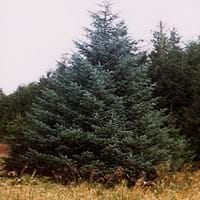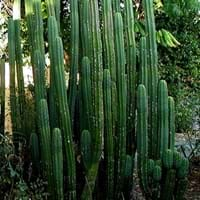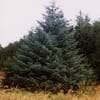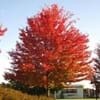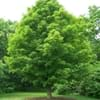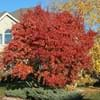Life Span
Perennial
Perennial
Origin
Eastern Asia
North America, Latin America and the Caribbean, Central America, South America
Types
Black Spruce, Norway Spruce, Colorodo Spruce
Not Available
Number of Varieties
Not Available
Habitat
By seashore, Humid climates, Temperate Regions
low mountains
USDA Hardiness Zone
6-8
8-10
AHS Heat Zone
8-2
Not Available
Sunset Zone
A3, 2a, 2b, 3a, 3b, 4, 5, 6, 7, 8, 9, 10, 12, 14, 15, 16, 17, 18, 19, 20, 21, 22, 23, 24
Not Available
Habit
Oval or Rounded
Not Available
Minimum Height
Not Available
Minimum Width
Not Available
Flower Color Modifier
Bicolor
Not Available
Fruit Color
Red, Green
Not Available
Leaf Color in Spring
Green, Light Green
Not Available
Leaf Color in Summer
Green
Not Available
Leaf Color in Fall
Red, Crimson
Not Available
Leaf Color in Winter
Not Available
Not Available
Leaf Shape
Acicular
Succulent
Plant Season
Spring, Summer, Fall, Winter
Not Available
Sunlight
Full Sun, Partial Sun, Partial shade
Full Sun
Growth Rate
Medium
Not Available
Type of Soil
Clay, Loam, Sand
Loam, Sand
The pH of Soil
Acidic, Neutral
Acidic, Neutral, Alkaline
Soil Drainage
Average
Well drained
Bloom Time
Early Spring, Spring, Late Spring, Early Summer
Not Available
Tolerances
Heat Tolerance, Humidity, Light Frost
Drought
Where to Plant?
Ground
Container, Ground
How to Plant?
Seedlings, Spores
Seedlings
Plant Maintenance
Medium
Medium
Watering Requirements
Needs less watering
Needs very little water
In Summer
Lots of watering
Lots of watering
In Spring
Moderate
Moderate
In Winter
Average Water
Average Water
Soil pH
Acidic, Neutral
Acidic, Neutral, Alkaline
Soil Type
Clay, Loam, Sand
Loam, Sand
Soil Drainage Capacity
Average
Well drained
Sun Exposure
Full Sun, Partial Sun, Partial shade
Full Sun
Pruning
Prune when young, Remove dead branches
Remove damaged leaves, Remove dead branches, Remove dead leaves
Fertilizers
slow-release fertilizers
All-Purpose Liquid Fertilizer
Pests and Diseases
Aphids, Birds, Snails
Bacterial soft rot, bees, Fungal Diseases, Mealy bugs, Scale, Spider mites
Plant Tolerance
Heat Tolerance, Humidity, Light Frost
Drought
Flowers
Insignificant
Showy
Flower Petal Number
Single
Not Available
Showy Fruit
No
Not Available
Edible Fruit
No
Not Available
Foliage Texture
Fine
Bold
Foliage Sheen
Matte
Not Available
Attracts
Ants, Fruit Bats, Snails, Squirrels
Insects
Allergy
Constipation, Diarrhea, Dizziness, Sore eyes
Not Available
Aesthetic Uses
Showy Purposes
Beautification, Showy Purposes
Beauty Benefits
For treating wrinkles, Making cosmetics, Speed hair growth
Removes dandruff, Skin inflammation, Skin Problems
Environmental Uses
Agroforestry, Air purification, Nesting sites for birds, soil stabilisation
Air purification
Medicinal Uses
anti-inflammatory, Back pain, Emollient, Immunity, Obesity
antimicrobial, Cardiac, High blood pressure, Wounds
Part of Plant Used
Leaf Stalks, Root
Flowers, Stem
Other Uses
Constructing Boats, Making piano frames, Used as fuel, Used in Furniture, Used in making musical instruments, Used in paper industry, Used in pencil industry
Traditional medicine, Used as Ornamental plant
Used As Indoor Plant
No
No
Used As Outdoor Plant
Yes
Yes
Garden Design
Container, Feature Plant, Mixed Border, Topiary / Bonsai / Espalier
Container, Houseplant, Rock Garden, Wall
Botanical Name
ACER palmatum 'Osakazuki'
Trichocereus pachanoi
Common Name
Japanese Maple, Osakasuki Japanese Maple
Trichocereus
In Hindi
सरल
Trichocereus
In German
Fichten
Trichocereus
In French
Picea
Trichocereus
In Spanish
Picea
Trichocereus
In Greek
Spruce
Trichocereus
In Portuguese
Picea
Trichocereus
In Polish
Świerk
Trichocereus
In Latin
Picea
Trichocereus
Phylum
Pinophyta
Magnoliophyta
Class
Pinopsida
Magnoliopsida
Order
Pinales
Caryophyllales
Family
Aceraceae
Cactaceae
Clade
Not Available
Angiosperms, Core eudicots, Eudicots
Tribe
Not Available
Trichocereeae
Subfamily
Piceoideae
Cactoideae
Importance of Sitka Spruce and Trichocereus
Want to have the most appropriate plant for your garden? You might want to know the importance of Sitka Spruce and Trichocereus. Basically, these two plants vary in many aspects. Compare Sitka Spruce and Trichocereus as they differ in many characteristics such as their life, care, benefits, facts, etc. Every gardener must at least have the slightest clue about the plants he wants to plant in his garden. Compare their benefits, which differ in many ways like facts and uses. The medicinal use of Sitka Spruce is anti-inflammatory, Back pain, Emollient, Immunity and Obesity whereas of Trichocereus is antimicrobial, Cardiac, High blood pressure and Wounds. Sitka Spruce has beauty benefits as follows: For treating wrinkles, Making cosmetics and Speed hair growth while Trichocereus has beauty benefits as follows: For treating wrinkles, Making cosmetics and Speed hair growth.
Compare Facts of Sitka Spruce vs Trichocereus
How to choose the best garden plant for your garden depending upon its facts? Here garden plant comparison will help you to solve this query. Compare the facts of Sitka Spruce vs Trichocereus and know which one to choose. As garden plants have benefits and other uses, allergy is also a major drawback of plants for some people. Allergic reactions of Sitka Spruce are Constipation, Diarrhea, Dizziness and Sore eyes whereas of Trichocereus have Not Available respectively. Having a fruit bearing plant in your garden can be a plus point of your garden. Sitka Spruce has no showy fruits and Trichocereus has no showy fruits. Also Sitka Spruce is not flowering and Trichocereus is not flowering . You can compare Sitka Spruce and Trichocereus facts and facts of other plants too.
